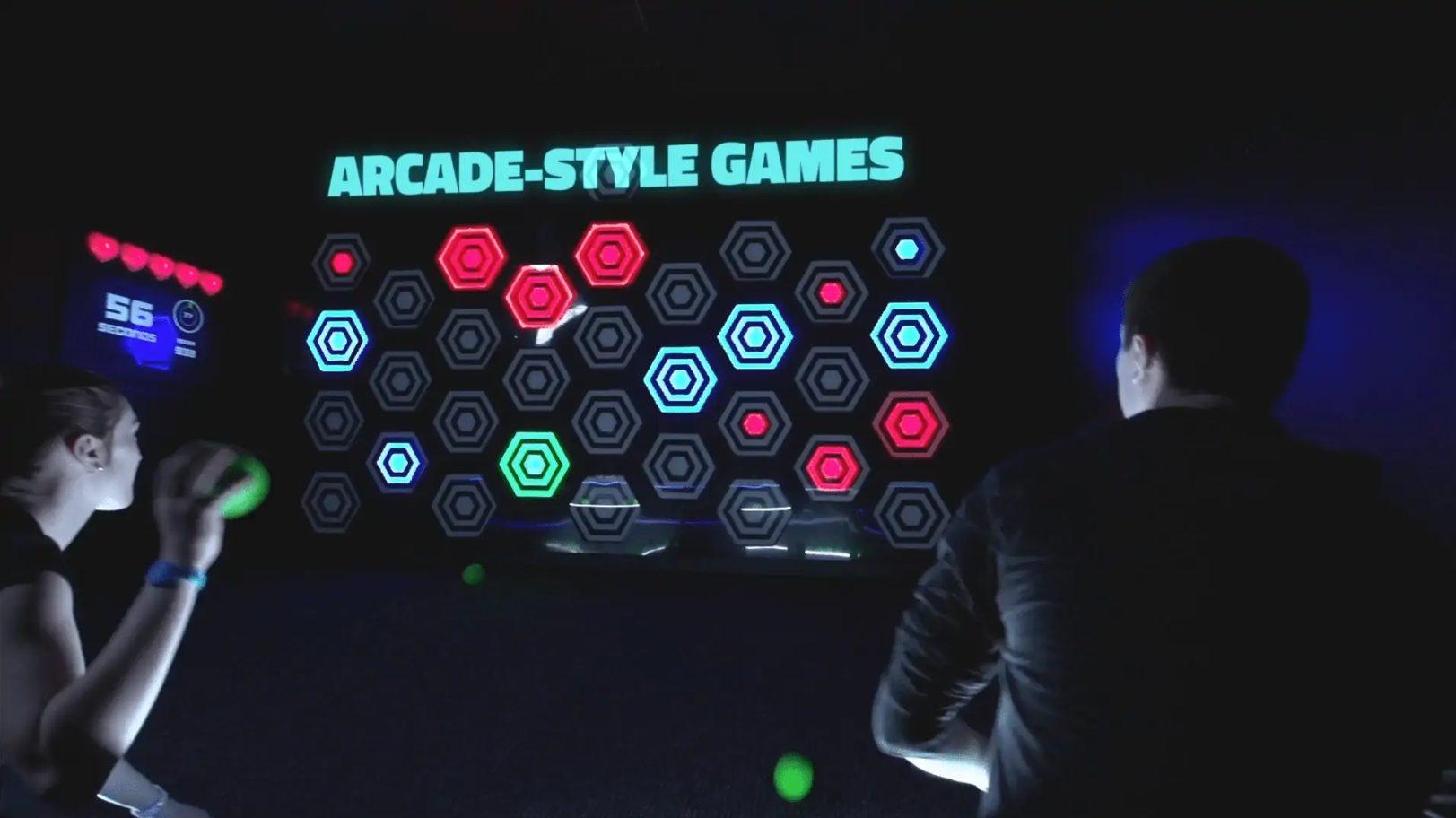-
LED Grids & Walls: Systems like the immersive Mega Grid use vast arrays of LED panels and precision sensors to create games of speed, accuracy, and strategy. Players might dodge obstacles, strike targets, or solve patterns on a wall that reacts instantly to their touch. -
Interactive Projection Floors: Advanced projectors and motion sensors bring the floor to life. Imagine dodging virtual lava flows or stepping on illuminated tiles to score points in games that demand agility and quick reflexes. -
Climbing Walls with Integrated Intelligence: Traditional rock climbing gets a high-tech upgrade. Walls embedded with LED lights and sensors can create changing routes, timed challenges, and competitive scoring systems, merging fitness with gaming. -
Hybrid AR/VR Elements: While fully immersive VR has its place, the trend is shifting towards mixed reality (MR) that enhances the physical space. This could involve interactive elements that appear to coexist with the real-world environment.
-
Unmanned & Self-Service Venues: The future points towards streamlined, touch-free experiences. Self-service kiosks and automated systems allow for easier operation and a hygienic, seamless customer journey from entry to gameplay. -
Hyper-Immersive Themes: Games are moving beyond abstract challenges into richly themed adventures. Sci-fi suspense, fantasy quests, and horror escape scenarios use lighting, sound, and narrative to deepen player immersion. -
Focus on Social & Team-Based Play: These environments are inherently social. Multiplayer formats that require teamwork, communication, and friendly competition are driving group bookings and repeat visits. -
Data-Driven Personalization: Sophisticated software can track player performance, offering personalized difficulty levels, leaderboards, and unique challenges for returning customers.



发表回复